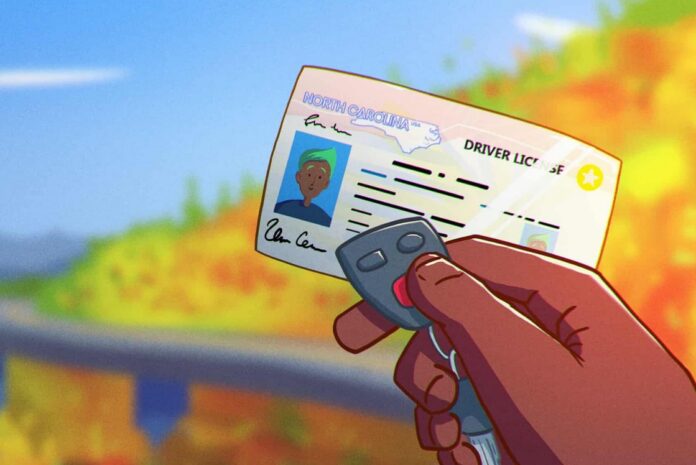Teen driving is a milestone for many families. It’s a rite of passage with newfound independence and freedom! But it also comes with a significant responsibility for both the teen and the parents.
In North Carolina, the numbers reflect a national trend where young drivers are more likely to be involved in collisions. As parents, arming yourselves with information and proactive strategies can make a difference in your teen’s driving habits and safety.
More On the Statistics Of Teen Driving
To make informed decisions about teen driving, it’s vital to familiarize oneself with the available data. Teen drivers, particularly in their first year behind the wheel, face challenges that make them more susceptible to accidents. Looking deeper into the statistics offers an enlightening perspective that underscores the necessity for guidance and proper training.

Higher Crash Risk
It’s an unsettling reality: teens have the highest crash risk of any age group. According to authorities from the Insurance Institute for Highway Safety (IIHS), the deadly crash rate per mile for 16-19 year-olds is nearly three times that for drivers aged 20 and over. This increased risk can be attributed to their lack of experience and sometimes overconfidence in their driving abilities.
On the unfortunate occasion of an accident, a car accident lawyer at Whitley Law Firm can greatly assist in filing a car accident claim.
The Distraction Factor
The digital age has introduced an array of distractions. Distractions due to smartphones are particularly concerning. Texting, social media notifications, or simply changing the music can divert a teen’s attention from the road for critical seconds. Additionally, peer passengers can be a significant source of distraction.
Impaired Driving
Despite never-ending campaigns against drinking and driving, some teenagers still engage in this dangerous behavior. The Centers for Disease Control tells that in recent studies, 5.4% of high school students admitted to driving after drinking alcohol in the past 30 days. What’s more alarming is that teens are less experienced with drinking, making them more susceptible to its impairing effects at lower levels of alcohol consumption.

Complete a North Carolina Graduated Driver’s Licensing (GDL) Program
North Carolina has implemented a Graduated Driver’s Licensing (GDL) program to reduce the risks associated with new drivers.
- Level one (Limited Learner Permit): This is the stage where supervised driving begins.
- Level two (Limited Provisional License): After passing an on-the-road test, teens can drive unsupervised during certain hours.
- Level three (Full Provisional License): This allows unrestricted driving.
Encourage Good Driving Habits
As parents, guardians, or influential figures in a teen’s life, we hold the powerful role of shaping their initial experiences on the road. Building a strong foundation of safe driving habits is not just a proactive approach; it’s a necessary investment in their long-term safety.
This formative stage will determine their driving behavior for years to come.
- Seat belt safety: Emphasizing seat belt use isn’t just about adhering to the law but reinforcing a life-saving habit. Encourage your teen to make buckling up an automatic action, regardless of the distance they’re traveling.
- Limit night driving: Every age group has a three times higher risk of fatal crashes at night. However, for inexperienced drivers, the limited visibility and different challenges the nighttime presents can be even more dangerous. Setting guidelines around night driving allows your teen to gain more daytime driving experience, which can better prepare them for nighttime challenges.
- Monitor weather conditions: Inclement weather, such as rain, fog, snow, or icy conditions, introduces a new set of driving challenges. Teach your teen the importance of adjusting their driving habits in these conditions, such as reducing speed, maintaining more significant distances from other vehicles, and understanding how their vehicle reacts.
- Stay calm and avoid aggressive driving: Stress the importance of patience. Aggressive driving, such as tailgating, speeding, or weaving between lanes, can lead to accidents. Instead, teach your teen to maintain a calm demeanor, be courteous to other road users, and always prioritize safety over getting to a destination quickly.

Utilize Technology to Assist in Driving
Luckily, technology is a convenient tool that can greatly enhance safety and oversight, especially for new drivers. Leveraging these technological innovations can provide teens and parents with invaluable insights and real-time feedback, facilitating a more informed and cautious driving experience.
Several applications have been developed to monitor and assist new drivers. These apps can:
- Geo-fence boundaries: Parents can set specific geographical boundaries, and an alert is sent if the teen driver goes beyond these areas.
- Disable texting and calling: Some apps can restrict phone functionalities when the vehicle is in motion, ensuring the teen isn’t distracted by messages or calls while driving.
- Drive reports: Receive reports on driving behaviors such as rapid acceleration, hard braking, and sharp turns. This data can be a talking point for parents and teens to discuss areas of improvement.
- Emergency alerts: When an accident occurs, some apps can automatically notify emergency contacts, providing peace of mind for parents.
Don’t Become a Statistic
Teen driving is an exciting but challenging phase in a family’s life. The roads of North Carolina are filled with opportunities and risks, making it a parent’s role to navigate this complex terrain with wisdom, patience, and guidance.

By embracing these strategies, you’re not just teaching your child to drive; you’re empowering them with the skills and ethics to serve them well throughout their lives. Your consistent attention and the support of well-designed laws and community programs in North Carolina can make teen driving a rewarding journey rather than a difficult rite of passage.









